Hello, everyone. I write to you from somewhere over Baja on my way to Panama for the spring Brain Health Retreat. It’s an overnight flight, which I usually try to avoid because getting good-quality sleep is a priority for me. But alas, here I am: ready to turn this cramped seat in the main cabin into a cozy nest for the next 7 hours.
I get asked a lot about how to stick to a brain-healthy lifestyle while traveling. What are the brain-healthy snacks I swear by? How do I navigate airport food? And, what do I eat while in-flight? So I thought it would be helpful to share some of my tried and true travel snacks, my approach to eating on the road, and some guidelines to help make decision-making in a new environment easier. Perhaps some of these suggestions will be helpful to you on your next getaway.
4 Guidelines For Brain-Healthy Eating On The Road
1. BYO snacks and drinks. While you don’t need to eat a lot on an airplane, you do need to stay well-hydrated. Since I don’t like to rely on the few cups of water provided by in-flight service, I bring an empty water bottle and fill it up before boarding. I bring my own tea bags, too (see below) to help keep me hydrated. When the trolley comes around, all I need to request is hot water. (Tea lovers will appreciate this: I even bring my own travel tea brewing set—a small ceramic cup with a lid that saves me from drinking out of a paper cup.)
2. Skip the airplane food. This includes foil-wrapped trays, snack boxes, bags of pretzels, drinks served from the trolley, or even little bags of overly salted and roasted nuts. I politely decline any food offered to me on the plane. This may seem strict, but this rule is my #1 secret (along with fasting, see below) to arriving well-rested and ready to tackle whatever happens in my new time zone.
Airplane food is some of the worst food for your brain. (I am speaking mostly of US travel; I’ve had excellent brain-healthy food traveling from Italy and France!) The food that comes on a foil-wrapped tray is ultra processed—a rapid delivery of sugar, unhealthy fats, and sodium with very little nutritive value. While you may be able to get away with eating a processed meal every now and then, on a plane its impact on your body is multiplied because there's no way to walk it off. Even a brief walk can ameliorate some of the sugar and fat that gets dumped into your bloodstream after such a meal.
If you don’t have time to BYO, planning ahead is key. Request a vegetarian, vegan, or raw menu when you book your flight. This at least will give you a few servings of fresh fruit and vegetables.
3. Eat lightly. Travel days are good days to eat lightly rather than packing in several large meals. Sitting on an airplane is so sedentary that you don’t need a lot of calories to get through the day. Eating while sitting can lead to daytime sleepiness, too. While I enjoy an airplane nap just like everyone, dozing through entire flights can negatively impact sleep quality at night.
Instead of approaching a long flight as an opportunity to sleep or snack, think of it as a time to build cognitive reserve—your lifelong intellectual capital that’s so important for Alzheimer’s prevention. Learn something new by listening to a podcast or watching a compelling documentary. Keep busy with a good book, magazines with long reads (like my ever-growing stack of unread New Yorker magazines), letters you’ve been wanting to write, or a game you like that’s also difficult. Keeping your brain occupied not only helps build new neural pathways, it will help stave off hunger pangs.
Intermittent fasters: this is a good time to extend your fast. While I don’t recommend embarking on a new fasting regimen on a trip, if you are already in the habit of eating during a certain window of the day (such as between 11 am and 7 pm), traveling is an excellent opportunity to experiment with longer fasts. Taking a prolonged fast (12 to 16 hours) that ends when you land may even help combat jet lag.
The theory goes like this: gut rest helps reset the circadian clock, that internal rhythm dictated by the suprachiasmatic nucleus, a tiny cluster of cells in the brain. These cells respond to light and dark, fluctuations in blood pressure, and hunger. Based on animal data—the work of Dr. Clifford Saper—the microbes who inhabit the gut microbiome have a circadian clock, too. Resting the gut by fasting helps these gut bugs reset their circadian rhythms, which in turn regulates the clock of their host. While this hasn’t been proven in human studies, my anecdotal experience is very positive: I experience minimal, if any, jet lag symptoms if I fast while traveling across time zones.
4. Avoid drinking alcohol. It’s tempting to have a cocktail, beer, or glass of wine on a plane, but it also comes with a price: leaving you even more dehydrated and with a negative impact on sleep. If you drink to alleviate nervousness while traveling, try this instead: download several guided meditations from apps like Calm or Headspace onto your phone so they are available up in the air. Push play upon take-off or whenever you feel uncomfortable.
Here are some ideas for a DIY travel care package full of brain-healthy snacks
Sometimes when I am headed out on a trip, I barely have time to get myself and my bag to the airport on time. If that’s how it is for you, too, I totally get it. Just do your best to eat whole foods on your journey.
When I have a small amount of time, however, I make myself a travel care package—nourishing treats to get me where I’m going. This gets to the “fit” of a brain-healthy way of living, a concept I talk about in my book and in this post. As someone who loves to cook and enjoys good food, I usually (but not always!) find time to pack some snacks. Whenever I can pull this off, my travels do seem to go more smoothly.
My brain food self-care satchel usually includes a protein-rich snack, another fiber-fueled one, and a treat that makes even a business trip feel like a vacation. Here are some of my faves.
Olives. Look for individual snack packs of olives for a fiber-rich satiating snack. I like the different flavored olives from Olove’s, and the lower in sodium ones from Mario Camacho.
Sturdy Whole-Grain Crackers + Almond Butter. Good old Triscuits make a sturdy cracker to go with individual packets of your favorite nut or seed butter. I also love the Sesame and Sea Salt Wasa Flatbread Thins, crush-resistant wafers with a decent amount of fiber.
Medjool Dates. These nut-stuffed, chocolate-drizzled dates are a decadent treat. If time allows, I’ll bring frozen Turtle Dates I’ve made ahead of time. (Find an off-the-cuff recipe here.)
Nuts. Buy your nuts raw and toast them yourself, if you like. Packaged roasted nuts harbor many inflammatory substances. My top picks on a plane: pistachios, cashews, almonds, and hazelnuts.
Green tea + my own cup. I favor green tea for mornings and a caffeine-free mushroom/cacao tea for the rest of the day. I am currently into Rishi Tea’s Super Matcha Green and Reishi Mushroom Hero tea satchels. If there's room in my carry-on, I love having my travel tea kit in flight.
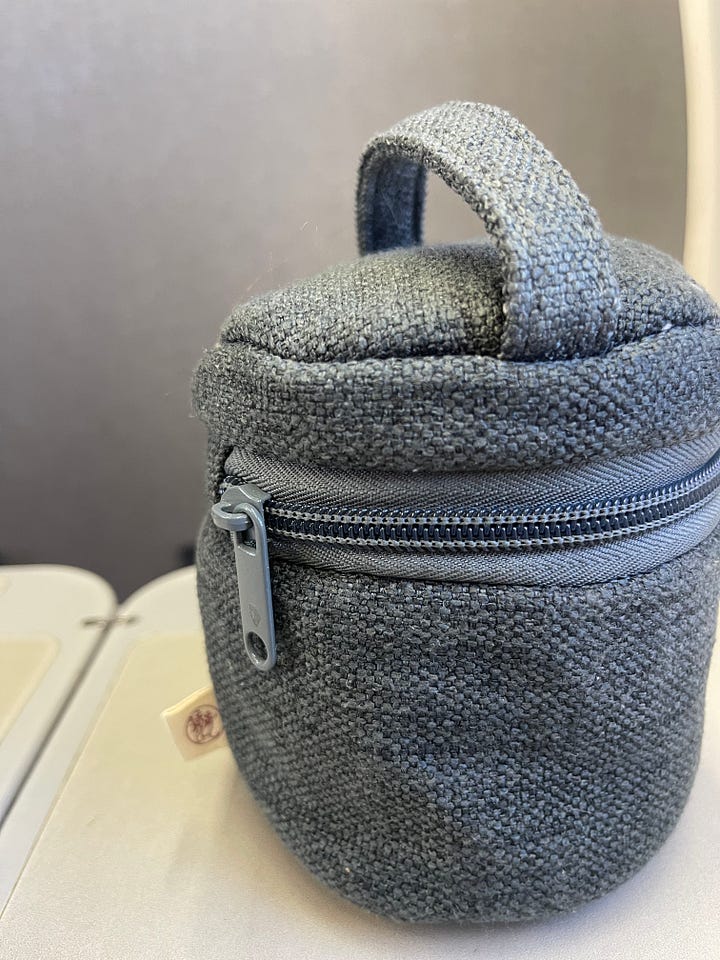
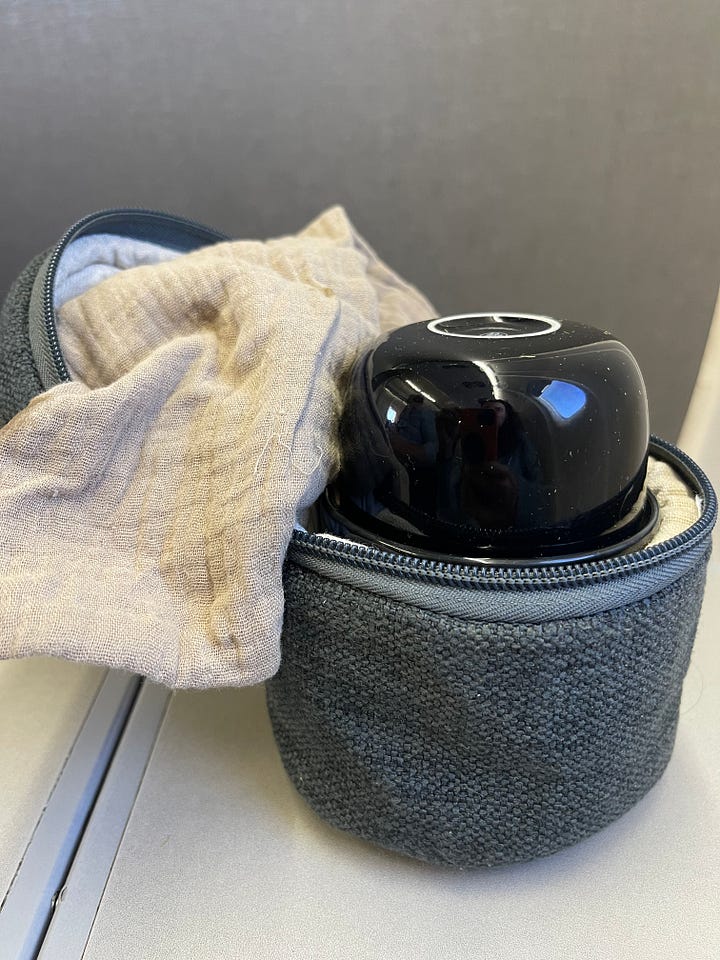
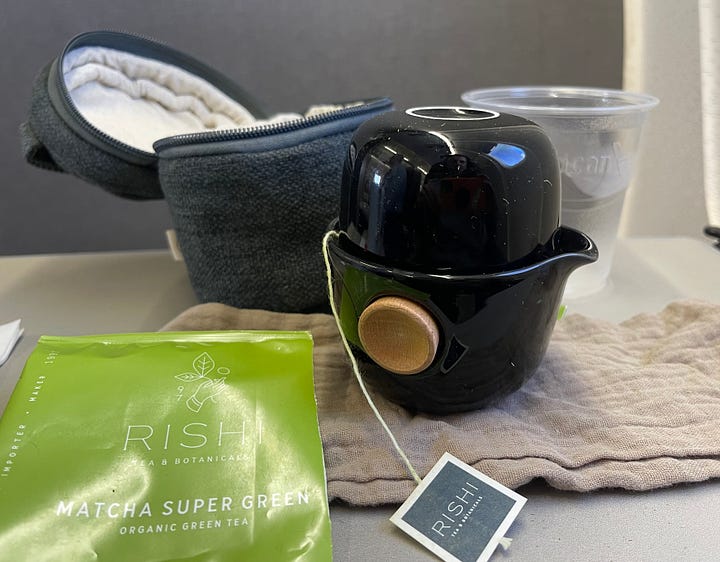
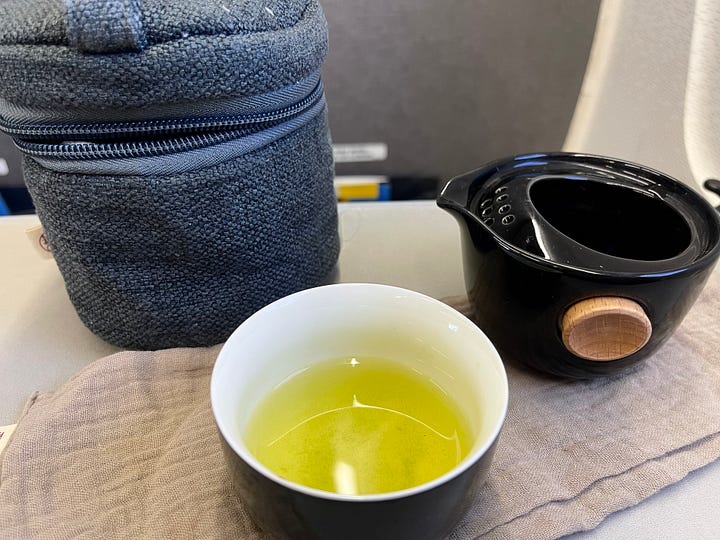
Boiled eggs. Controversial, I know, so it may be kinder to your seatmate to enjoy your eggs before you get on the plane. A perfect protein-packed snack, eggs also provide brain health nutrients like choline, lutein, and omega-3 fats. My 9-minute method for boiling eggs ensures a just-right creamy yolk: bring water to a boil, gently add eggs, reduce to a simmer and set timer for 9 minutes; immediately plunge into an ice water bath.
A chocolate treat. This could be a small dark chocolate bar, a few Fudgy Quinoa Brownies, this healthier chocolate chunk cookie, or a small portion of my Dark Chocolate Granola with Cacao Nibs.
Fruit. Travel-friendly choices include Sumo and Mandarin oranges (both easy to peel), apples, pears, or a small container of berries, including a cluster of grapes.
Hummus and fresh vegetables or crackers. Individually packed cups of hummus can sometimes be found at airport kiosks.
Yogurt + Granola. Bring your favorite homemade granola and grab a container of plain yogurt at the airport. Make it Greek-style for a decent serving of protein.
Note: Avoid any opened packages of loose tea, powders (protein powders, collagen peptides, and the like), or spices. I once had a nice discussion about brain-healthy foods with a group of TSA agents in Salt Lake City while they ran forensics on my nutritional yeast. I can usually get away with a small container of flaky salt and za’atar, however, which I sprinkle on boiled eggs. When traveling to the US from other countries or outlying areas like Hawaii, you’ll need to skip fresh vegetables and fruit in your snack arsenal.
At the airport, these are my favorite grab-and-go options:
Salads and grain bowls from the Farmer’s Fridge, a surprisingly good product I discovered during the last leg of my book tour
A plate of Middle Eastern mezze from Garbanzo Mediterranean Fresh
An off-menu request at a Mexican restaurant: a bowl of rice, beans, salsa, avocado, and wedges of lime.
Instant oatmeal from a coffee shop, like Starbuck’s or Peet’s (which comes with walnuts and dried wild blueberries)
Also ever present in my in-flight brain health care package: a small, sturdy bottle of my best extra-virgin olive oil (for making everything taste better, and for dressing my own salads in restaurants), flaky Maldon salt, and MELT balls for an in-flight foot treatment. For overnight flights, I wear compression socks, bring good ear plugs, and my favorite black-out eye mask.
Perfection is not the goal
I am not a perfect eater, and I definitely have my travel food vices. Case in point: those 2- bite York peppermint patties at every airport shop. Sometimes a few of those make it into my bag, too.
So I would love to know, what is your favorite brain-healthy travel snack? I’ll be traveling almost nonstop for the next few months on the BHK book tour, and I’d love some new ideas!
Book Tour News
I looking forward to meeting some of you as the Brain Health Kitchen book tour continues! Here’s where I’ll be in the next few months.
Monday, April 3: Denver, CO
In conversation with Travis Macy, Mark Macy, and Patrick Regan, authors of A Mile At a Time. The Tattered Cover, 6:00 p.m.
Details and tickets here
Tuesday, April 4: Boulder, CO
In conversation with Travis Macy, Mark Macy, and Cindy Weinstein. The Boulder Bookstore, 6:30 pm.
Details here.
Wednesday, April 12: Cincinnati, OH
In conversation with Dr. John Tew and Beverly Grant of the Univeristy of Cincinnati. Joseph-Beth Cincinnati, 7:00 pm
Details here.
Monday, April 17: New York City
Jewish Community Center.
Details soon.
Wednesday, April 19: Boston
In conversation with Dr. Andrew Budson.
Hummingbird Books, 6:30 pm.
Details here.
California friends: I’ll be back in the San Francisco bay area for events in early May. Details coming soon!
Finally, I’ll leave you with this article by one of my favorite food writers:
. Lukas is the author of 6 cookbooks (including Snacks for Dinner and the soon-to-be-released Veggie Burgers Every Which Way, Second Edition) and the phenomenal Substack Family Friend: . I had the best time chatting with Lukas about making healthy food the best food you want to eat. While you are there, be sure to check out Lukas' innovative spin on healthy food. I want to cook all his recipes and I know you will, too.I’ll be back on Tuesday with a few nuggets from the Brain Health Retreat. Wish me luck on my flight!
Love,
Annie

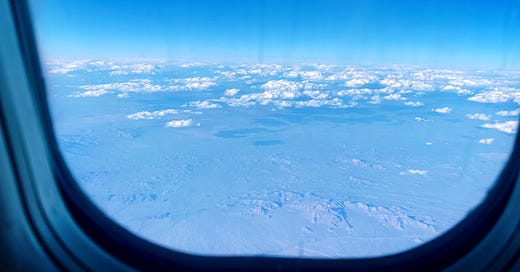



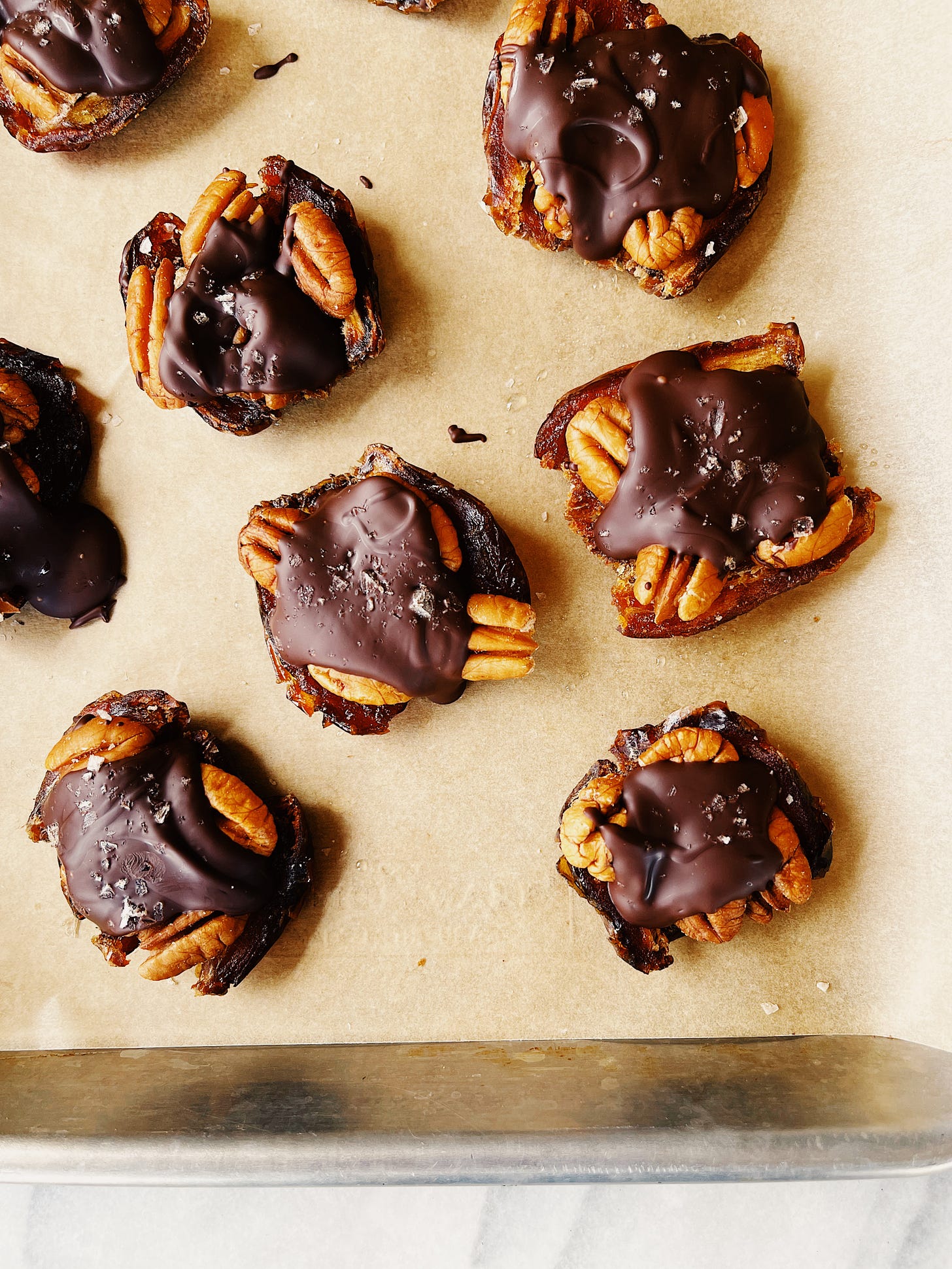
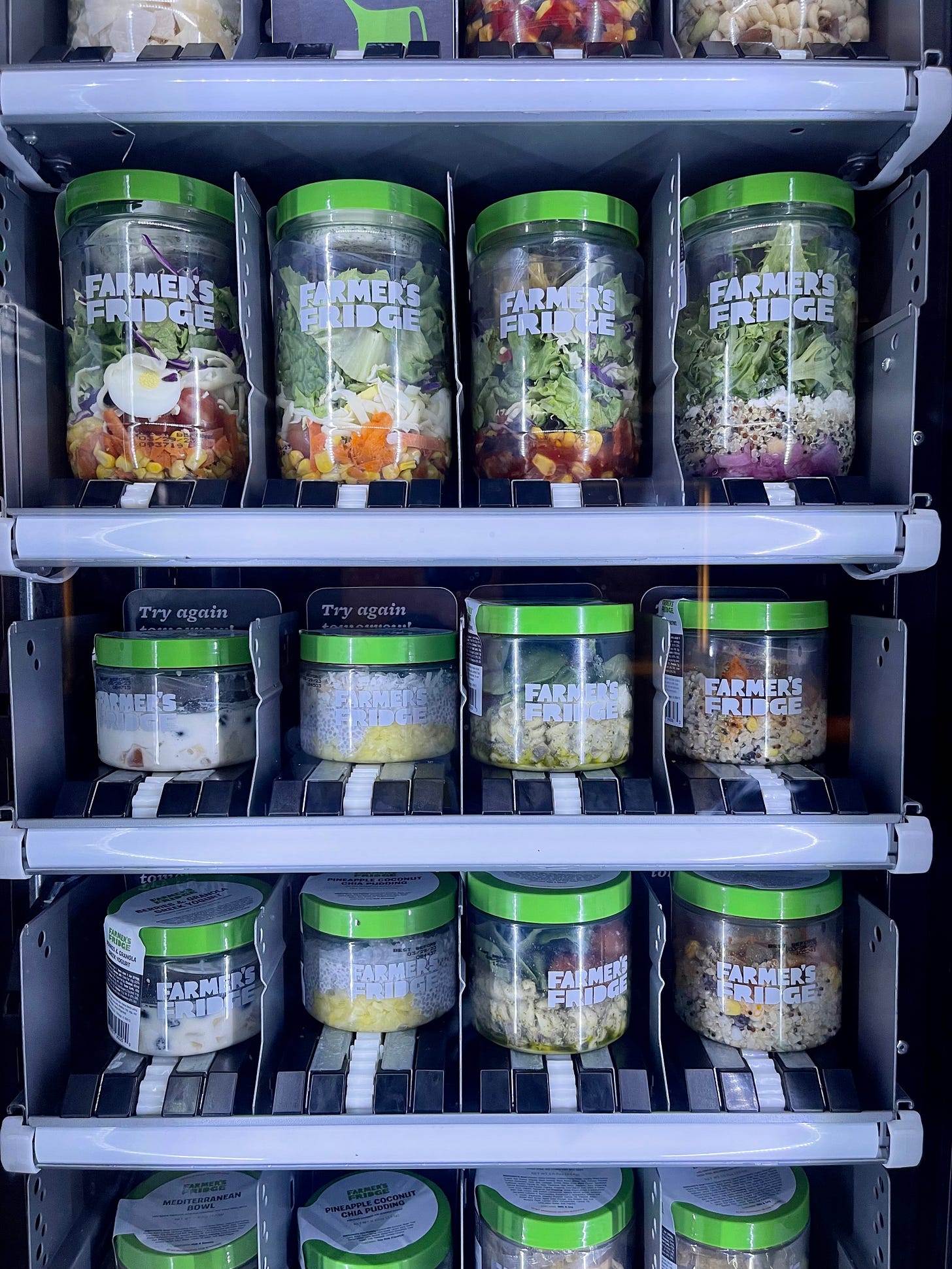
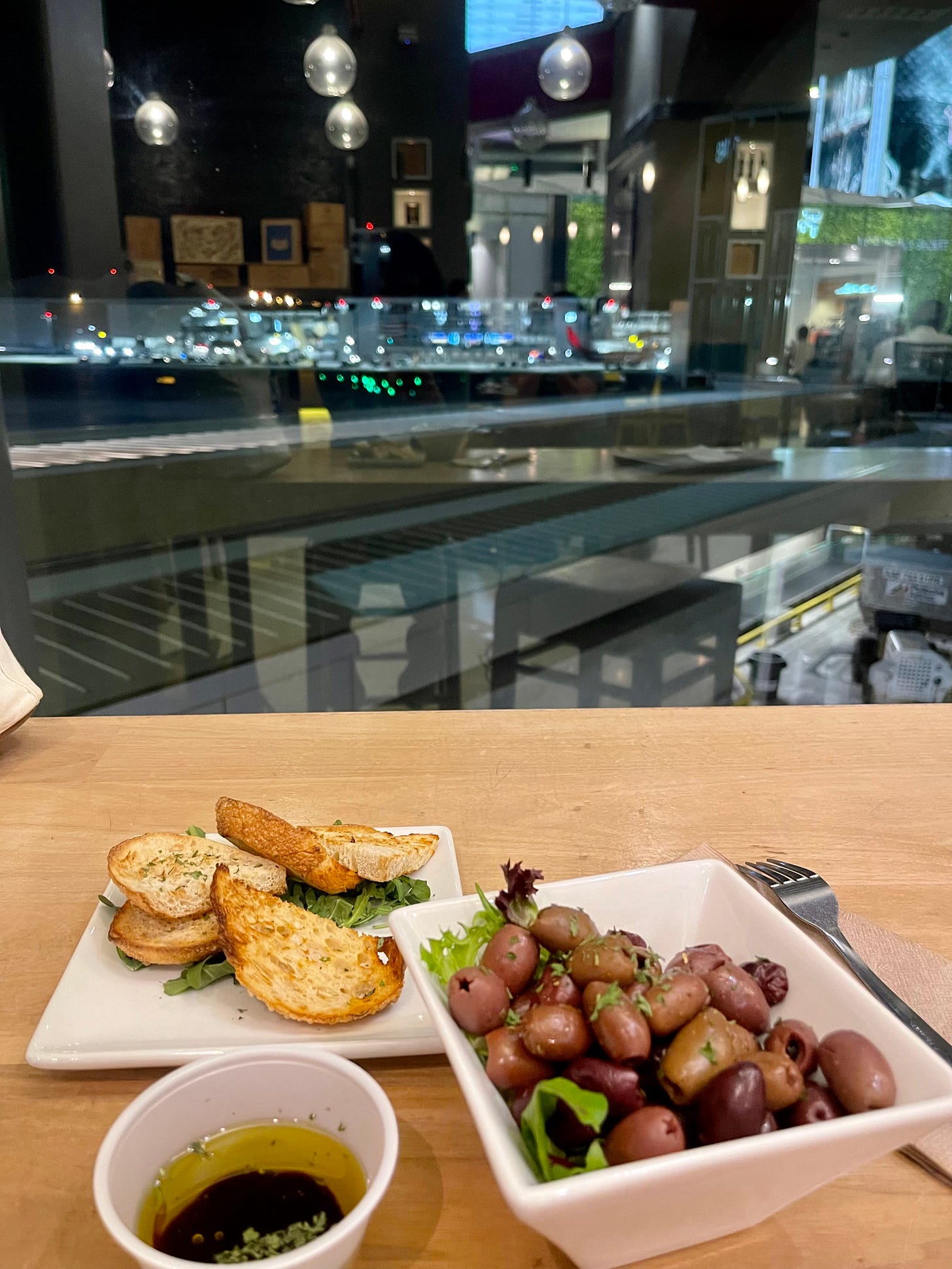
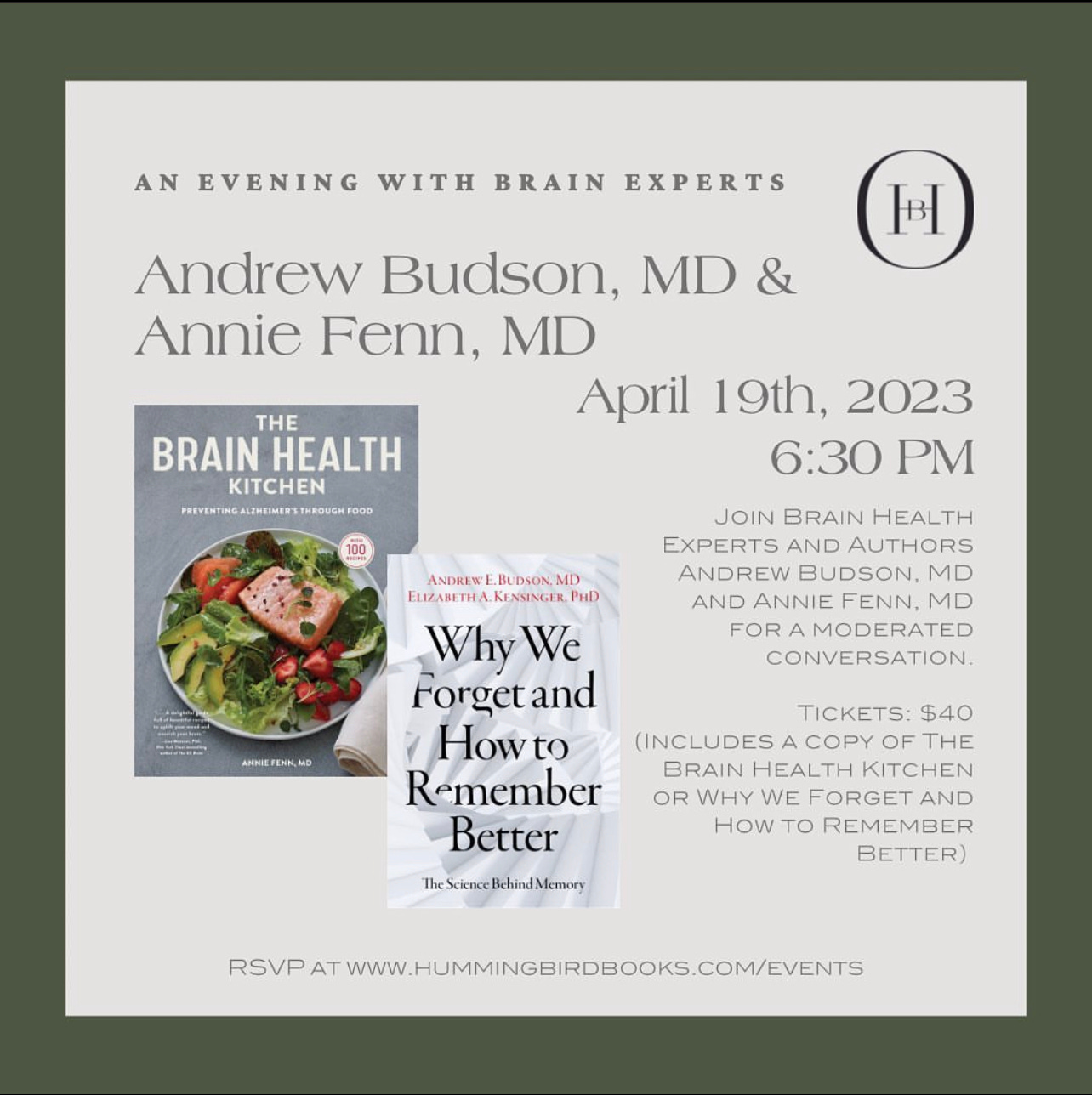
I bring a bag of mixed whole grain cereal...Wheat Chex, Fiber One. If it's early in the morning, I make a yogurt, berry, and walnut parfait in a plastic carry cup and eat that at the airport before I get on the plane. I also bring one of your blueberry muffins.
Wonderful post - enjoying one year later. ;)
Something that works really well for me before a long trip is making my destination grocery list on the same Iist I've used to pack for the trip. This way, I've already decided what I want in my hotel fridge for breakfast. It helps me make better choices than what might appeal to me after a long international flight crammed into a position nature never intended.